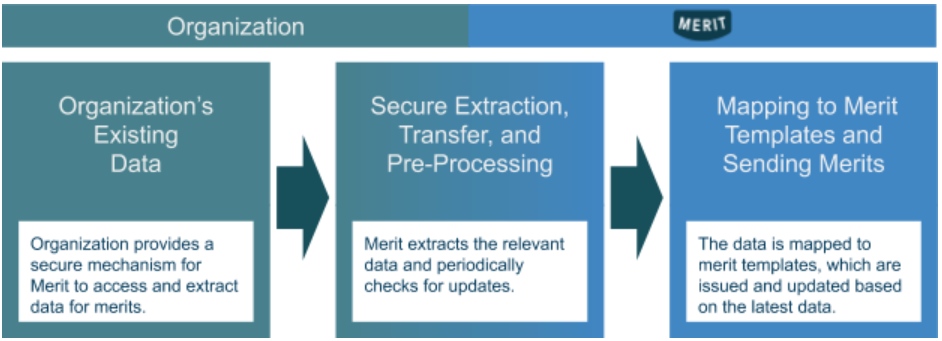Twelve Golden Rules From The Kitchen For Effective Leadership: ‘Mise En Place’
We’ve often been taught that “faster is better” when hustling to get a job done, but during my time working in the catering business, I learned...
1 min read
Merit Jan 9, 2020

Organizations of all types use Merit to send digital credentials or merits. These can be anything from licenses to certificates, or even records of attendance, and are often manually sent to people individually, or using bulk upload by filling out a copy of the downloadable template.
However, many organizations have databases that are too large to manually send merits to individually, or they update information too often to use a bulk-upload feature. That’s where Merit’s Bridge feature comes in.

Bridge allows many merits to be sent or updated at once via a permanent link between an organization’s database and Merit’s platform. This means that as an organization's database is updated with address changes or license renewals and expirations, the associated merits are automatically sent, updated, and revoked as appropriate, without any additional manual work.
Why Use Bridge?
First and foremost, Bridge saves time. Once set up and configured, it runs automatically, taking the manual work out of managing merits. This also leads to another significant benefit, the merits issued by an organization using Bridge will always reflect the latest data available, eliminating the need to manage information in multiple places. This of course results in faster and more accurate changes that drives increased member confidence, an improved overall experience, and ultimately, happier members.
How Does Bridge Work?
With Bridge, organizations can ensure that their merits are as up-to-date as possible, reflecting any changes without the need for manual interaction. While there is a lot going on under the hood, Bridge can be easily thought of as a simple three step process:

Organizations can utilize Bridge by creating a secure connection between Bridge and their first-party data (typically stored via a spreadsheet in an sFTP directory). The data can then be mapped to merit templates in order to securely automate the management of those templates.
Once linked, Merit will sync new data and update existing data. The new data is immediately reflected by changes to merits in the real world, so new members are issued credentials and existing members get updates applied automatically and quickly.
We’ve often been taught that “faster is better” when hustling to get a job done, but during my time working in the catering business, I learned...
Your people are your most valuable asset and your biggest competitive advantage. Invest in them wisely, and they’ll take your company places you...
Big workforce initiatives thrive on strong collaboration between ecosystem partners; however, navigating those projects may sometimes be challenging....